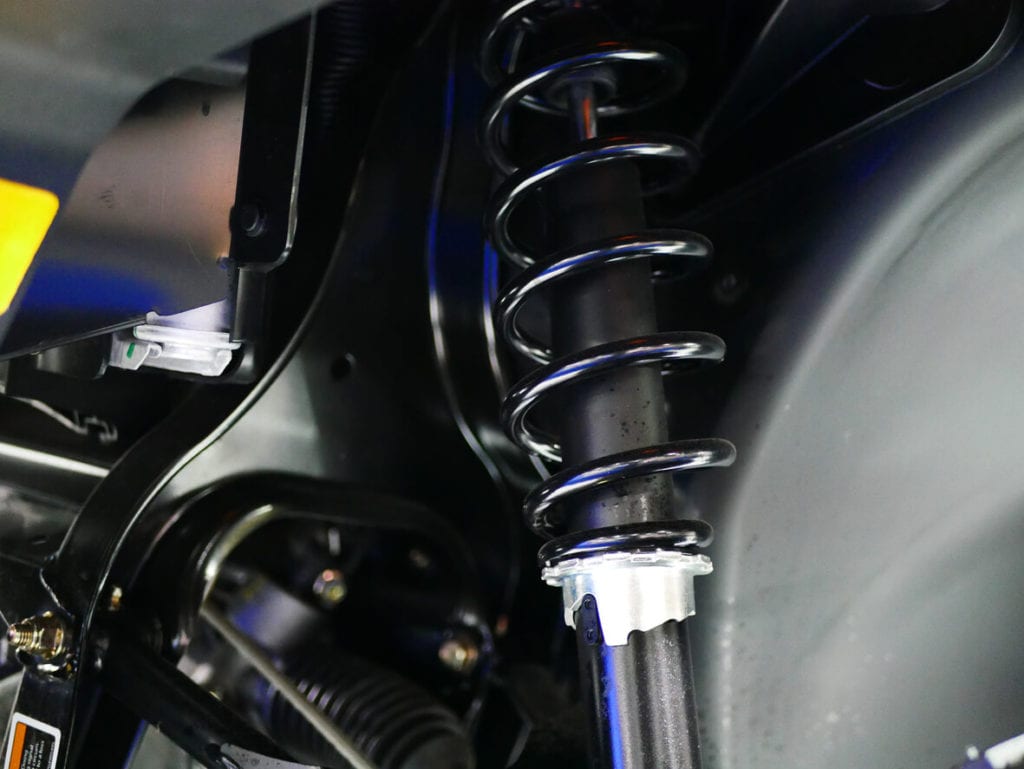 If roads were perfectly flat and free from imperfections, suspension systems would be superfluous. Unfortunately, no road is perfect and it’s your wheels that will come across any irregularities. Can you imagine going over a pothole at 50 MPH with no suspension? Ouch! Suspension systems in vehicles are meant to help adapt to all conditions on the road from smooth highways to bumpy dirt roads. They make sure your tires keep in contact with the road while providing comfort for passengers. Shocks or struts on your car are part of the suspension system and contrary to popular belief, shocks do not support the weight of your vehicle. They quite literally absorb motive energy and convert it to thermal energy through hydraulic fluid. So, how do car shocks work? First, you should understand how the suspension system works.
If roads were perfectly flat and free from imperfections, suspension systems would be superfluous. Unfortunately, no road is perfect and it’s your wheels that will come across any irregularities. Can you imagine going over a pothole at 50 MPH with no suspension? Ouch! Suspension systems in vehicles are meant to help adapt to all conditions on the road from smooth highways to bumpy dirt roads. They make sure your tires keep in contact with the road while providing comfort for passengers. Shocks or struts on your car are part of the suspension system and contrary to popular belief, shocks do not support the weight of your vehicle. They quite literally absorb motive energy and convert it to thermal energy through hydraulic fluid. So, how do car shocks work? First, you should understand how the suspension system works.
How Vehicle Suspension Works
The suspension is made up of several components working in unison to boost friction between the tires and the road, providing stability and control with effective handling to maximize the comfort of passengers. The suspension adjusts up and down when necessary without jolting the car. Though a driver may feel some driving conditions, it’s less abrasive, allowing the driver to recognize alarming road conditions such as driving on the shoulder, etc. When you encounter a bump on the road, the springs absorb the energy, then the shocks dampen the force.
How Shocks Work
Shocks are essentially oil pumps that are placed between the wheels and the frame of the car. Shocks are tasked with controlling the movement of the springs and suspension. When the vehicle encounters road imperfections, such as a bump, the spring coils and uncoils and the motive energy is transferred to the shock. A piston that is attached to the end of a rod creates resistance against the hydraulic fluid within the pressure tube. As the suspension goes up and down, a tiny amount of hydraulic fluid is pushed through the valves. By doing so, it slows the piston and reduces spring and suspension movement.
Shocks are made to adjust to all kinds of road conditions to reduce any sway, roll, bounce, or brake diving/acceleration squatting. Resistance depends greatly on the speed of the suspension as well as the size and total of orifices in the piston. Most modern vehicles have “velocity-sensitive” hydraulic dampening devices. This means the faster the suspension moves, the greater the resistance the shocks will provide.
Shocks vs. Struts
Struts are a major structural part of the suspension system. Most vehicles that use struts do not possess upper control arms and upper ball joints used in most suspension structures. Struts are made to take on a larger load and less space as they are often integrated with the coil spring. Like shocks, struts provide resistance control to suspension and spring movement, while simultaneously providing structural support to the suspension by stabilizing the spring and keeping tires in alignment.
When To Replace Shocks
Manufacturers of shocks and struts recommend replacement around 50,000 miles. However, this can vary based on your driving habits and the environment you travel over on a daily basis. For example, if you live in an area with dirt roads or encounter potholes daily, you may need to replace them sooner than someone who does not drive as frequently. Your shocks do a lot of work. Consider this, when your vehicle reaches 50,000 miles, your shocks may have oscillated 88 million times, that’s about 1,760 times per mile! You may also recognize that it’s time to replace your struts or shocks based on performance. Have you noticed any handling issues while driving or any of the following symptoms?
- Stiff or poor steering
- Leaning or swaying while turning or changing lanes
- Uneven tire tread wear
- Wobbly feeling while braking
- Bouncing while moving
- Leaking fluid from the top of shock
While no routine maintenance is needed on shocks or struts, their conditions should be monitored, especially as they age. Many times, certain symptoms don’t appear until after the components have already failed. Have your struts and shocks inspected at a minimum of every six months. Inspections should include checks for leaks, corrosion, broken or worn mounts, as well as bushings around the suspension mechanisms.
